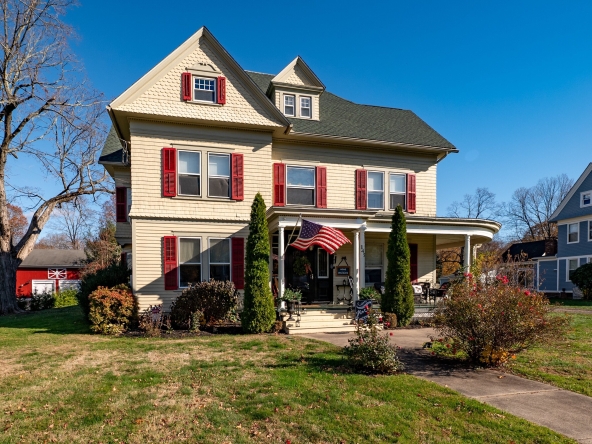You Ask, We Answer: What Are Different Types of Home Heating Systems, and What Are Their Benefits?
You’re ready to begin searching for a home and your Calcagni Real Estate agent has lined up showing appointments for you. But once you begin your home search in earnest, you may discover that homes in Connecticut don’t always have the same types of home heating systems. You don’t have to be an HVAC expert to know about home heating, however. Here are some of the most common types of home heating systems, along with some of their respective benefits.
Forced Air Heating
You will probably come across forced air heating and cooling systems in your Connecticut home search, as it’s one of the most popular HVAC (heating, ventilation and air conditioning) systems.
Forced air refers to a system that utilizes a blower fan to send air from the furnace through a series of ducts into the rooms of the home, then sends this air back to the furnace through vents called “returns.” One of the main benefits of forced air is that these ducts are shared by both the heating and air conditioning systems, making them efficient (and hence, popular). They work quickly to boost the warmth in a chilly room, or to cool down a room during warmer months.
Many people add filters to the forced air ducts to keep the air flow clean and to lower allergens; it’s also possible to connect humidifiers to this system so the air indoors doesn’t become too dry.
Forced air systems are compatible with electricity, natural gas, fuel oil, and even liquid propane.
Baseboard Radiator
Baseboard radiator heat is another popular option you may come across in your Connecticut home search. This hydronic system uses hot water heated in a central boiler to circulate through water pipes, and the heat escapes into the room from “fin tube” radiators that run along the baseboards on the floor. The warmed air rises from the floor and heats the rest of the room.
Some of the benefits of baseboard radiators are that they’re long lasting (they generally last several decades) and relatively inexpensive to repair or replace, ranging from around $500-1200. They’re also very responsive to temperature control, so you can accurately adjust their output with your thermostat.
The boilers for baseboard radiators work with multiple fuel types, including electricity, natural gas, fuel oil, and liquid propane; some may even be compatible with solar power.
Heat Pump
Increasingly popular in Europe, the heat pump is also gaining more attention here stateside. This newer heating and cooling technology takes air from outside and either warms it or cools it, then distributes it via wall-mounted systems like mini-splits.
One of the benefits of heat pumps is that you don’t have to install ductwork like in central air or forced air scenarios, yet they still deliver both heating and cooling capabilities. In addition, heat pumps are energy efficient and easy to set for precise temperature control.
Heat pumps generally run on electricity, though some natural gas units are available.
Traditional Boiler and Radiator
Traditional boiler and radiator heating systems are common in older homes in Connecticut; you know them by the cast-iron upright units that often sit by windows. These units rely on a central boiler that sends steam through pipes and heats the radiators, which give off heat in the rooms where they’re located. Newer systems rely on hot water that circulates via a heat pump instead of the centralized boiler.
If your skin and hair tends to dry out in the winter due to hot, dry indoor air, you may enjoy the benefit of the moist air radiator heat provides. Another benefit of traditional boiler and radiator systems? When paired with a new boiler, they can actually be quite energy efficient.
Traditional boiler and radiator home heating systems work with fuel oil, electricity, natural gas, or liquid propane.
Ductless Mini-Split
The appeal of the ductless mini-split home heating system is right in the name: these ductless systems can heat and cool rooms without having to install pricey HVAC ducts. Instead, an outdoor compressor unit and an indoor air handler work to transport air between components, heating and cooling the home with ease.
One of the benefits of the ductless mini-split is that they can be energy efficient in more temperate climates. With Connecticut’s weather becoming milder in the winter, ductless mini-splits may become increasingly more energy efficient. Another benefit: These units can be installed high up on a wall, creating an unobtrusive heating and cooling option.
Ductless mini-splits operate on electricity.
Now that you know more about common home heating systems, you can discuss what options make the most sense for you and your family with your Calcagni Real Estate agent. Happy house hunting!




